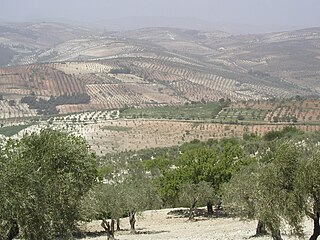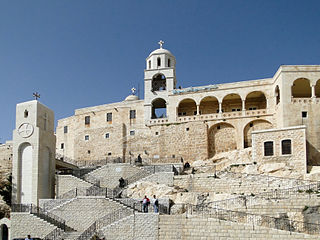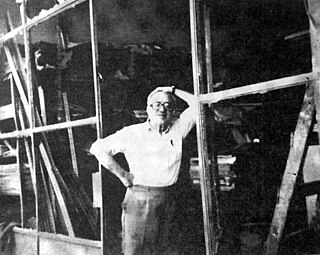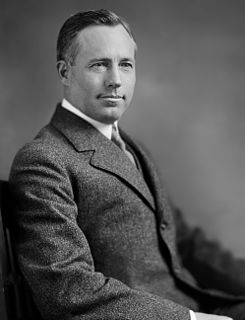Related Research Articles

Aleppo is a city in Syria, which serves as the capital of the Aleppo Governorate, the most populous Syrian governorate with an official population of 4.6 million in 2010.

Gaziantep, previously and still informally called Aintab or Antep, is the capital of the Gaziantep Province, in the westernmost part of Turkey's Southeastern Anatolia Region and partially in the Mediterranean Region, approximately 185 km (115 mi) east of Adana and 97 km (60 mi) north of Aleppo, Syria. It is thought to be located on the site of ancient Antiochia ad Taurum, and is near ancient Zeugma.

Kilis is a city in south-central Turkey, near the border with Syria, and the administrative centre of Kilis Province.
Antiochia ad Taurum was a Hellenistic city in ancient Syria east of Mount Amanus of the Taurus mountain range. Later identified as 'ad Taurum montem' in the Commagene province of Syria.

The Union of the Armenian Evangelical Churches in the Near East, abbreviated as UAECNE, is an autonomous body of Armenian Evangelical churches comprising 25 congregations throughout Lebanon, Syria, Turkey, Greece, Egypt, Iran, Iraq and Australia.

Aleppo Mountains or Kurd-Dagh is a highland region in northwestern Syria and southeastern Turkey. It is located in the Aleppo Governorate of Syria and Kilis Province of Turkey. The Kurd mountain should not be confused with the neighboring Jabal al Akrad, which is located further southwest towards the mediterranean coastline.
The Armenians in Syria are Syrian citizens of either full or partial Armenian descent.

Christians in Syria make up about 10-12% of the population. The country's largest Christian denomination is the Greek Orthodox Church of Antioch, closely followed by the Greek Catholic Church, one of the Eastern Catholic Churches, which has a common root with the Eastern Orthodox Church of Antioch, and then by Oriental Orthodox Churches like Syriac Orthodox Church and Armenian Apostolic Church. There are also a minority of Protestants and members of the Assyrian Church of the East and Chaldean Catholic Church. The city of Aleppo is believed to have the largest number of Christians in Syria. In the late Ottoman rule, a large percentage of Syrian Christians emigrated from Syria, especially after the bloody chain of events that targeted Christians in particular in 1840, the 1860 massacre, and the Assyrian genocide. According to historian Philip Hitti, approximately 900,000 Syrians arrived in the United States between 1899 and 1919. The Syrians referred include historical Syria or the Levant encompassing Syria, Lebanon, Jordan and Palestine. Syrian Christians tend to be relatively wealthy and highly educated.

Martyrs' Church is an Armenian Evangelical Church located in Souleimaniye district of Aleppo, Syria. The origin of the church goes back to 1865, Aintab, Turkey, where the congregation of the first Armenian Evangelical - Kayajik church decided to split into two groups. Those who agreed to move out, started a second church at Hayik quarter of the city. The first pastor of the church was Rev. Kara Krikor Haroutyounian served the church until his death in 1907. Rev. Manaseh Papazian also served as associate pastor from 1892–1907. He was followed by Rev. Bedros Topalian (1907–1912). During those years, the church ran an elementary and intermediate school called Niziblian School. Several pastors took over the leadership of the church until 1921, when all the Armenians of Aintab were forced out of the city as part of the Kemalist government's policy racist policy.

Simon Simonian was an Armenian intellectual who founded the literary and social Armenian periodical Spurk.

Religion in Syria refers to the range of religions practiced by the citizens of Syria. Historically, the region has been a mosaic of diverse faiths with a range of different sects within each of these religious communities. The majority of Syrians are Muslims, of which the Sunnis are the most numerous, followed by the Shia groups, and Druzes. In addition, there are several Christian minorities. There is also a small Jewish and Yazidi community.

Church of the Holy Mother of God, is an Armenian Apostolic church located in the Sulaimaniyeh district of Aleppo, Syria. The church is active since its consecration on May 1 May 1983, by then-Catholicos of the Holy See of Cilicia Karekin II.

The Forty Martyrs Armenian Cathedral of Aleppo, Syria, is a 15th-century Armenian Apostolic church located in the old Christian quarter of Jdeydeh. It is significant among the Armenian churches for being one of the oldest active churches in the Armenian diaspora and the city of Aleppo. It is a three-nave basilica church with no dome. Its bell tower of 1912, is considered to be one of the unique samples of the baroque architecture in Aleppo.

The Vilayet of Aleppo was a first-level administrative division (vilayet) of the Ottoman Empire, centered on the city of Aleppo.
Aleppo College is a junior college. It awards high school degrees at the tenth grade. And up to 1964, it awarded freshman and sophomore classes in arts, engineering and medicine at the 11th and 12th Grades. It is based in the Syrian city of Aleppo since 1923. The roots of the college are traced back to the Central Turkey College of Aintab founded between 1874-1876 by the American Board of Commissioners and Foreign Missions in the Ottoman Empire to serve the large number of Christian Armenian population in the region.

Jesse Benjamin Jackson was a United States consul and an important eyewitness to the Armenian genocide. He served as consul in Aleppo when the city was the junction of many important deportation routes. Jackson concluded that the policies towards the Armenians were "without doubt a carefully planned scheme to thoroughly extinguish the Armenian race." He considered the "wartime anti-Armenian measures" to be a "gigantic plundering scheme as well as a final blow to extinguish the race." By September 15, 1915, Jackson estimated that a million Armenians had been killed and deemed his own survival a "miracle". After the Armenian Genocide, Jackson led a relief effort and was credited with saving the lives of "thousands of Armenians."

Fred Douglas Shepard was an American physician who witnessed the Armenian Genocide. Due to his relief efforts, Shepard is known to have saved many lives during the genocide. He was especially known for trying to dissuade Turkish politicians from deporting the Armenians.

Aram Karamanoukian was a Lieutenant General of the Syrian Army. He was also member of the Syrian Parliament. He is the author of several books. For his work as a scholar and military serviceman, Karamanoukian received medals from Egypt, Armenia, Lebanon, Syria, and France.

Fannie Perkins Andrews Shepard was an American physician who worked as a missionary and university lecturer in Turkey. As a result of her gender she was unable to work as a physician however she was able to work as a nurse and midwife as well as to lecture in medical botany at the Medical Department of the Central Turkey College. She also assisted widows and orphans to support themselves by providing them with the ability to sell goods they crafted. She made a scientifically significant botanical collection in and around the area she lived sending these specimens to George Edward Post thus assisting with his publication The Flora of Syria, Palestine and Sinai. Her collection is held in the Herbarium of the American University of Beirut and her type specimens are held at Conservatory and Botanical Garden of the City of Geneva.
References
- ↑ "Synod-SL:Aleppo College". Archived from the original on 2014-01-13. Retrieved 2012-09-08.
- ↑ Syrian History:Aleppo College
- ↑ Miller, George (1967). "Aleppo College: Failure or Fulfilment?". The Muslim World. 57: 42–45. doi:10.1111/j.1478-1913.1967.tb01239.x.
- Encyclopædia Britannica Eleventh Edition, s.v. Aintab.